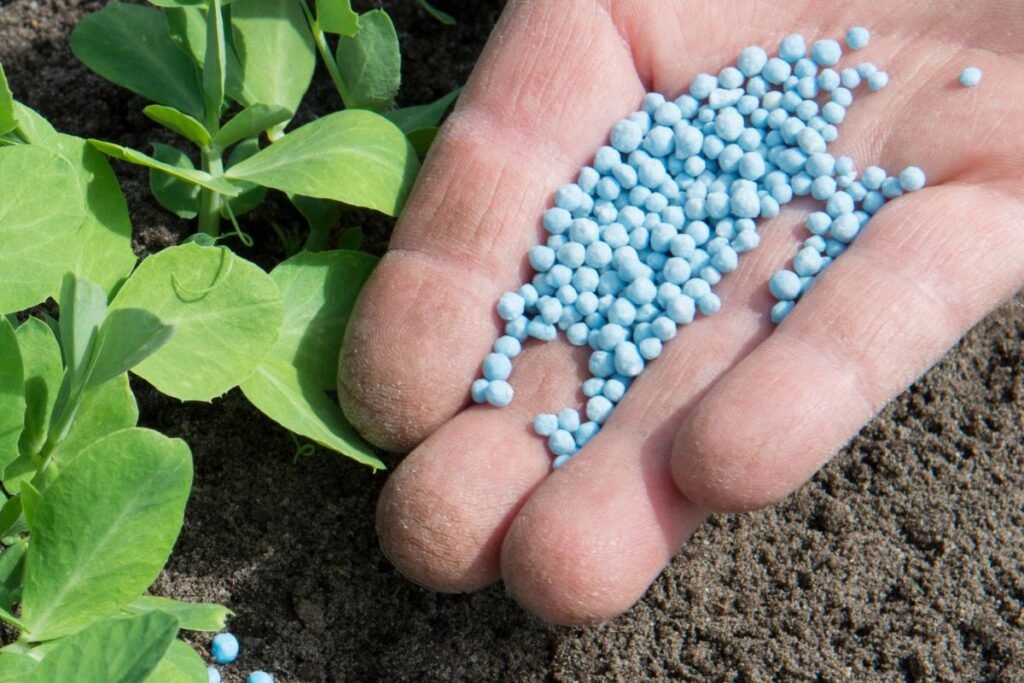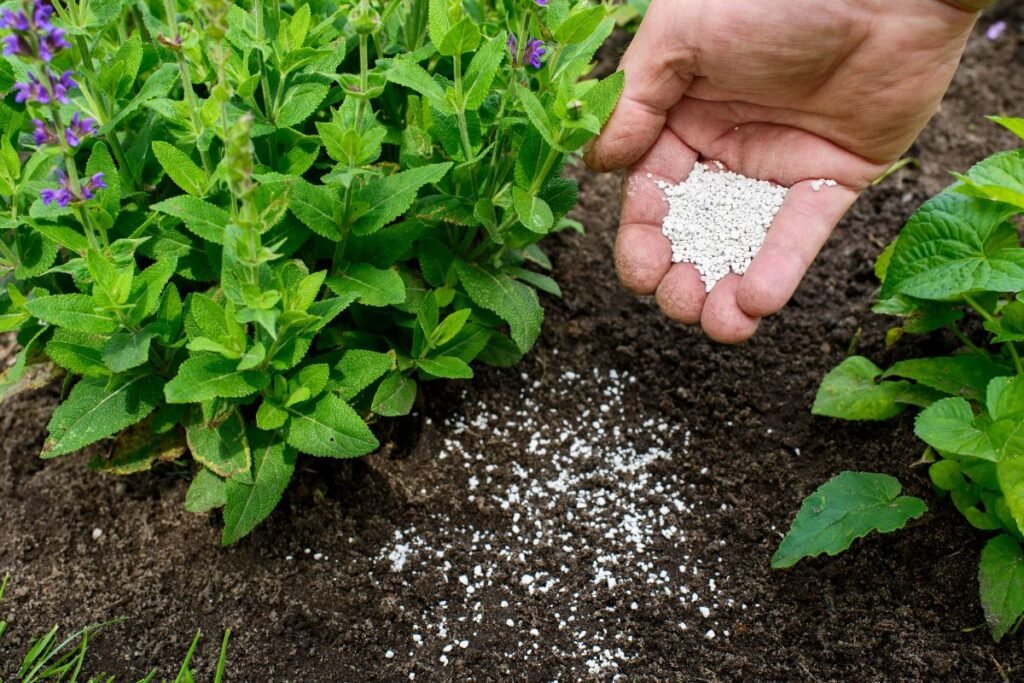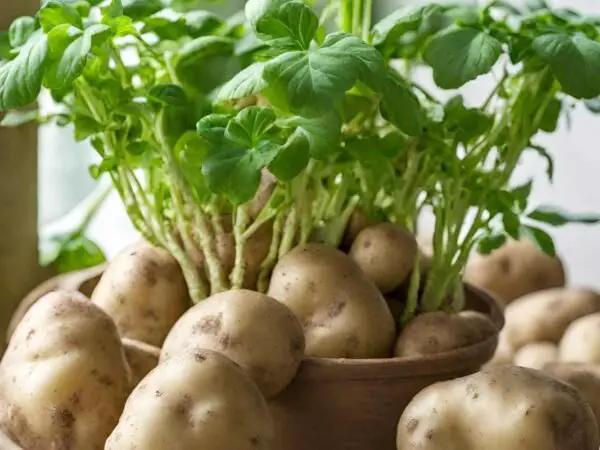
Did you know that using the correct fertilizer can increase sweet potato yields by up to 20%? When it comes to growing healthy and abundant sweet potatoes, choosing the right nutrients for tubers is key. By providing essential elements such as nitrogen, phosphorus, and potassium through liquid fertilizers, gardeners can ensure their sweet potato plants thrive, produce tubers, and yield a bountiful harvest.
Looking to learn more about how to optimize your sweet potato crop with the best fertilizer practices? Stay tuned for expert tips on maximizing your yield and cultivating a successful sweet potato harvest.
Key Takeaways
- Understand the fertilization basics for sweet potatoes to provide them with essential nutrients for growth.
- Choose the right type of fertilizer based on the specific needs of sweet potatoes, such as balanced formulations rich in potassium.
- Follow proper timing and frequency guidelines to ensure consistent and adequate fertilization without overloading the plants.
- Apply fertilizers correctly by distributing them evenly around the plants and watering them in to facilitate absorption.
- Watch out for signs of over-fertilization, like leaf burn or stunted growth, and take immediate action to address the issue.
- Enhance flower production in sweet potatoes by maintaining a balanced fertilization regimen to support overall plant health.
Fertilization Basics
Understanding Impact
Fertilizer plays a crucial role in sweet potato growth, providing essential nutrients for healthy development. Different nutrients such as nitrogen, phosphorus, and potassium influence the growth of sweet potato vines. Choosing the right fertilizer is vital for ensuring optimal results in terms of yield and quality.
Essential Nutrients
Nitrogen Balance
Maintaining a proper nitrogen balance is key for sweet potatoes to thrive. Both nitrogen deficiency and excess can have detrimental effects on sweet potato plants, impacting their overall health and productivity. To adjust nitrogen levels effectively, consider soil testing and applying fertilizers at the right time during the growing season.

Micronutrient Roles
Micronutrients like boron, manganese, and molybdenum play specific roles in supporting various aspects of sweet potato growth. Deficiencies in these micronutrients can lead to stunted growth, poor tuber development, and increased susceptibility to diseases. Including micronutrients in fertilizer formulations is essential for addressing these deficiencies and promoting robust plant growth.
NPK Importance
Highlighting the significance of NPK (nitrogen, phosphorus, potassium) in sweet potato cultivation is crucial. Each nutrient in the NPK trio contributes uniquely to the overall health and productivity of sweet potato plants. Understanding the ideal NPK ratios for sweet potato fertilization enables growers to tailor their fertilizer applications to meet the specific needs of their crops efficiently.
Sweet Potato Needs
Soil Testing
l testing is crucial before applying fertilizer to sweet potatoes. Knowing the current nutrient levels helps determine the right type and amount of fertilizer. Conducting soil tests accurately involves sampling various areas of the planting site.
Understanding the soil's nutrient content optimizes plant growth. It allows for targeted fertilization, preventing over or under-fertilization. To conduct a soil test, collect samples, send them to a lab, and follow their recommendations for fertilization.
Nutrient Levels
Correcting Imbalance
To correct nutrient imbalances in sweet potato plants, adjust fertilizer types and amounts based on deficiencies or excesses. Symptoms of deficiencies include yellow leaves, stunted growth, while excesses can cause leaf burn. utions involve selective fertilization, adjusting pH levels, and using organic amendments to restore balance.
Salt Buildup
Salt buildup poses risks to sweet potatoes by hindering water uptake and nutrient absorption. It can lead to stunted growth and yield reduction. Prevent salt accumulation by proper irrigation practices and leaching excess salts from the soil. Address salt buildup by flushing the soil with water, ensuring proper drainage, and avoiding excessive use of salty fertilizers.
Types of Fertilizers
Liquid vs. Granular
Liquid fertilizers offer quick nutrient absorption for sweet potatoes, enhancing growth and yield rapidly. On the other hand, granular fertilizers provide slow-release nutrients over time, promoting long-term plant health.
When it comes to application methods, liquid fertilizers are easily absorbed through the plant's leaves and roots, while granular fertilizers require incorporation into the soil. This difference affects the speed of nutrient delivery to the plants.
For sweet potatoes, consider using liquid fertilizers during critical growth stages for immediate nutrient availability. In contrast, granular fertilizers are ideal for sustained feeding throughout the growing season.
Organic vs. Synthetic
Pros and Cons
Organic fertilizers, derived from natural sources like compost or manure, enrich the soil with essential nutrients without harmful chemicals. They promote soil biodiversity and long-term fertility but may have slower nutrient release rates.
In contrast, synthetic fertilizers are manufactured with precise nutrient ratios for rapid plant uptake. While they provide quick results, they can lead to nutrient runoff and soil degradation over time if not used carefully.
Choosing organic fertilizers for sweet potatoes enhances soil structure and microbial activity, supporting sustainable plant growth. Conversely, synthetic options offer immediate nutrition but may require more frequent applications to maintain plant health.
Timing and Frequency
Spring Awakening
Spring is a crucial time for fertilizing sweet potatoes because it marks the beginning of active growth for these plants. Sweet potato vines start to emerge from the ground, requiring nutrient-rich soil to support their rapid development. During spring, sweet potatoes have increased nutrient needs, particularly for nitrogen, phosphorus, and potassium, essential for healthy vine growth and tuber formation.
To ensure optimal growth, it is recommended to fertilize sweet potatoes in early spring just before planting or as soon as vines begin to spread. A balanced fertilizer with an NPK ratio of 5-10-10 or 8-24-24 can be applied at this stage. Frequent but light applications every two to three weeks can help meet the plant's nutrient demands without causing excessive vegetative growth.

Summer Lovin'
Consistent fertilization during summer months is crucial for sweet potatoes as they enter their peak growing season. Fertilizing during this time supports vigorous leaf growth and encourages abundant flowering, leading to higher yields of quality tubers. The warm temperatures and longer days of summer increase the plant's metabolic activity, requiring a steady supply of nutrients.
Adjusting fertilizer applications based on weather conditions is essential in summer. During periods of heavy rainfall, consider reducing nitrogen-based fertilizers to prevent leaching and nutrient runoff. Opt for slow-release organic fertilizers that provide a steady nutrient supply over time, promoting sustained growth throughout the summer season.
Fall Farewell
As sweet potato plants transition into fall, their fertilization requirements change due to reduced daylight hours and lower temperatures. Decreasing fertilizer applications in autumn is necessary to allow the plants to naturally begin preparing for dormancy. Excessive nitrogen during this period can hinder the plant's ability to store energy in its roots for winter survival.
To prepare sweet potatoes for winter, gradually taper off fertilization in late fall as vine growth slows down. Consider applying a potassium-rich fertilizer before the first frost to enhance root development and improve tuber quality. This helps fortify the plants against colder temperatures and ensures a successful harvest when winter arrives.
Winter Wisdom
During winter months, it is advisable to limit or avoid fertilization altogether for sweet potatoes. The cold temperatures and reduced sunlight inhibit plant growth and nutrient uptake, making additional fertilization unnecessary. Over-fertilizing during winter can lead to nutrient imbalances in the soil, affecting the plant's overall health.
Protecting sweet potato plants during winter involves mulching around the base of the vines with organic materials like straw or leaves. This helps insulate the roots from freezing temperatures and provides some level of protection against frost damage. By taking these precautions and avoiding fertilization in winter, you set your sweet potato plants up for success when spring returns.
How to Fertilize
Step-by-Step Guide
To fertilize sweet potatoes effectively, start by calculating the amount needed based on your plant's size and soil condition. Apply a balanced fertilizer with equal parts of nitrogen, phosphorus, and potassium. This promotes root development and overall plant health. Time your fertilization carefully; apply before planting and again during the growing season.
When applying fertilizer, ensure even distribution around the plants. Gently work it into the soil surface to prevent runoff. Water the plants after fertilizing to help the nutrients reach the roots. Monitor plant growth and adjust fertilizer amounts accordingly throughout the season.
Avoiding Damage
In-Ground Tips
For sweet potatoes grown in the ground, prepare the soil well before planting. Incorporate organic matter to improve nutrient retention. When applying fertilizer, avoid direct contact with plant stems to prevent burning. Regularly test soil pH levels to ensure optimal nutrient uptake by the plants.
Container Garden
When fertilizing sweet potatoes in container gardens, choose a well-draining potting mix rich in organic matter. Select a container that allows for adequate root growth and drainage holes to prevent waterlogging. Use a slow-release fertilizer specifically formulated for container plants to provide consistent nutrition.
Over-Fertilization Signs
Recognizing Red Flags
Spotting signs of nutrient deficiencies or toxicity in sweet potato plants is crucial for their health. Look for leaf discoloration, stunted growth, and wilting as common indicators. Address these issues promptly to prevent further damage and ensure optimal plant growth.
When sweet potatoes lack essential nutrients, they exhibit symptoms like yellowing leaves or unusual patterns on foliage. On the other hand, excessive fertilization can lead to burnt leaf edges and overall poor plant health. By observing these visual cues, you can take corrective actions promptly.
To tackle nutrient-related problems effectively, consider conducting a soil test to determine the specific deficiencies affecting your sweet potato plants. Adjust the fertilizer application based on the results to provide the required nutrients without overloading the soil. Proper monitoring and timely adjustments can help maintain healthy plant growth.
Preventing Fiascos
Storing Fertilizer
Properly storing fertilizers is essential to maintain their effectiveness over time. Store fertilizers in a cool, dry place away from direct sunlight to prevent degradation. Ensure that containers are tightly sealed to avoid moisture exposure, which can impact the quality of the fertilizer.
Maintaining optimal storage conditions is crucial for preserving the potency of fertilizers. Avoid storing them near heat sources or in areas prone to temperature fluctuations. By keeping fertilizers in ideal conditions, you can ensure that they retain their nutrient content and remain effective for your sweet potato plants.
Quick Tips
-
Implement a regular fertilization schedule based on your sweet potato plant's growth stage.
-
Monitor plant response to fertilizer applications and adjust quantities as needed.
-
Consider organic fertilizers for a more sustainable approach to nourishing your sweet potatoes.
-
Conduct soil tests periodically to assess nutrient levels and make informed fertilizer decisions.
-
Incorporate compost into your soil mix for natural nutrient enrichment and improved soil structure.
Remedies for Issues
Leaching Nutrients
Nutrient leaching occurs when water moves through the soil, carrying away essential nutrients needed by sweet potato plants. Excessive watering or heavy rainfall can exacerbate this issue, leading to nutrient depletion in the soil. To prevent nutrient loss, ensure proper drainage to avoid waterlogging and consider using mulch to retain moisture.
To maintain soil fertility and prevent leaching, apply fertilizers in moderation at the right times during the growing season. Consider using slow-release fertilizers that provide nutrients gradually, reducing the risk of excess runoff. regularly test your soil to monitor nutrient levels and adjust fertilization accordingly.
Adjusting Fertilization
Addressing Damage
Improper fertilization practices can result in various issues like leaf burn, nutrient deficiencies, or excesses in sweet potato plants. If you notice signs of damage, such as yellowing leaves or stunted growth, identify the specific problem by conducting a thorough inspection. Once identified, adjust your fertilization routine by selecting the appropriate type and amount of fertilizer based on plant needs.
To rectify damage caused by incorrect fertilization, flush out excess nutrients with water and provide additional care tailored to the specific deficiency observed. For instance, if there are signs of nitrogen deficiency, consider supplementing with a nitrogen-rich fertilizer. Monitor plant progress closely after adjustments to ensure recovery and healthy growth.
Best Practices Forward
Flower Production Connection
Blooming Impact
Fertilization plays a crucial role in influencing blooming in sweet potato vines. By providing the necessary nutrients, such as phosphorus and potassium, plants are encouraged to produce more flowers. These flowering clusters are essential for subsequent fruit development.
To enhance blooming, focus on targeted fertilization strategies. Ensure the soil pH is optimal for nutrient uptake and consider using organic fertilizers rich in phosphorus. regular watering can help nutrients reach the plant roots effectively.
Flower Nutrients
Nitrogen and Blooms
Nitrogen levels significantly impact flower production in sweet potato plants. Adequate nitrogen availability is vital for promoting healthy blooms and overall plant vigor. However, excessive nitrogen can lead to lush foliage at the expense of flowers.
Adjusting nitrogen applications based on plant growth stages is crucial to support blooming. During the early growth phase, focus on nitrogen-rich fertilizers to stimulate vine development. As the plant transitions to flowering, reduce nitrogen inputs to prioritize flower production.
Micronutrients Boost
Micronutrients play a crucial role in boosting the growth and health of sweet potato vines. Deficiencies in micronutrients like iron, zinc, and boron can hinder plant development and reduce productivity. Incorporating these micronutrients into fertilizer regimes is essential for optimal results.
To address micronutrient deficiencies, consider using foliar sprays containing chelated micronutrients for efficient absorption by the plants. Regular soil testing can also help identify specific deficiencies and guide targeted supplementation strategies.
Closing Thoughts
Ensuring your sweet potatoes receive the right fertilization is key to a bountiful harvest. By understanding their specific needs, choosing the appropriate fertilizer type, and applying it correctly, you set the stage for healthy growth and abundant yields. Keep an eye out for signs of over-fertilization and know how to remedy any issues that may arise to maintain optimal plant health.
Now armed with the knowledge of proper fertilization techniques for sweet potatoes, go ahead and give your plants the care they deserve. Your efforts will not only result in a successful harvest but also contribute to the overall well-being of your garden. Share this valuable information with fellow gardening enthusiasts to help them achieve thriving sweet potato crops too.
Frequently Asked Questions
What are the basic principles of fertilizing sweet potatoes?
To ensure optimal growth, sweet potatoes require balanced fertilization. Use organic or balanced synthetic fertilizers rich in potassium and phosphorus to promote root development. Avoid excessive nitrogen to prevent lush foliage at the expense of tuber production.
How can I determine the type of fertilizer suitable for sweet potatoes?
Choose a fertilizer with an N-P-K ratio around 5-10-10 or 8-24-24 to meet sweet potatoes' needs. Opt for slow-release organic fertilizers like compost or well-aged manure for sustainable nutrient supply without risk of over-fertilization.
When and how frequently should I fertilize my sweet potato plants?
Apply fertilizer when planting and again during the growing season, typically every 4-6 weeks. Start with a balanced fertilizer at planting, then switch to a low-nitrogen option once vines start spreading. Adjust frequency based on plant vigor and soil quality.
What signs indicate over-fertilization in sweet potato plants?
Watch for symptoms like excessive foliage growth, delayed maturity, or cracked tubers, which suggest over-fertilization. Yellowing leaves, burned leaf edges, or stunted growth may also occur. Test your soil regularly to monitor nutrient levels and adjust fertilization accordingly.
To enhance flower production in sweet potatoes, ensure adequate sunlight exposure and proper watering practices. Consider foliar feeding with a high-phosphorus liquid fertilizer during flowering stages to support bloom development. Avoid high-nitrogen fertilizers that can inhibit flower formation.
Image Source: Paid image from CANVA





